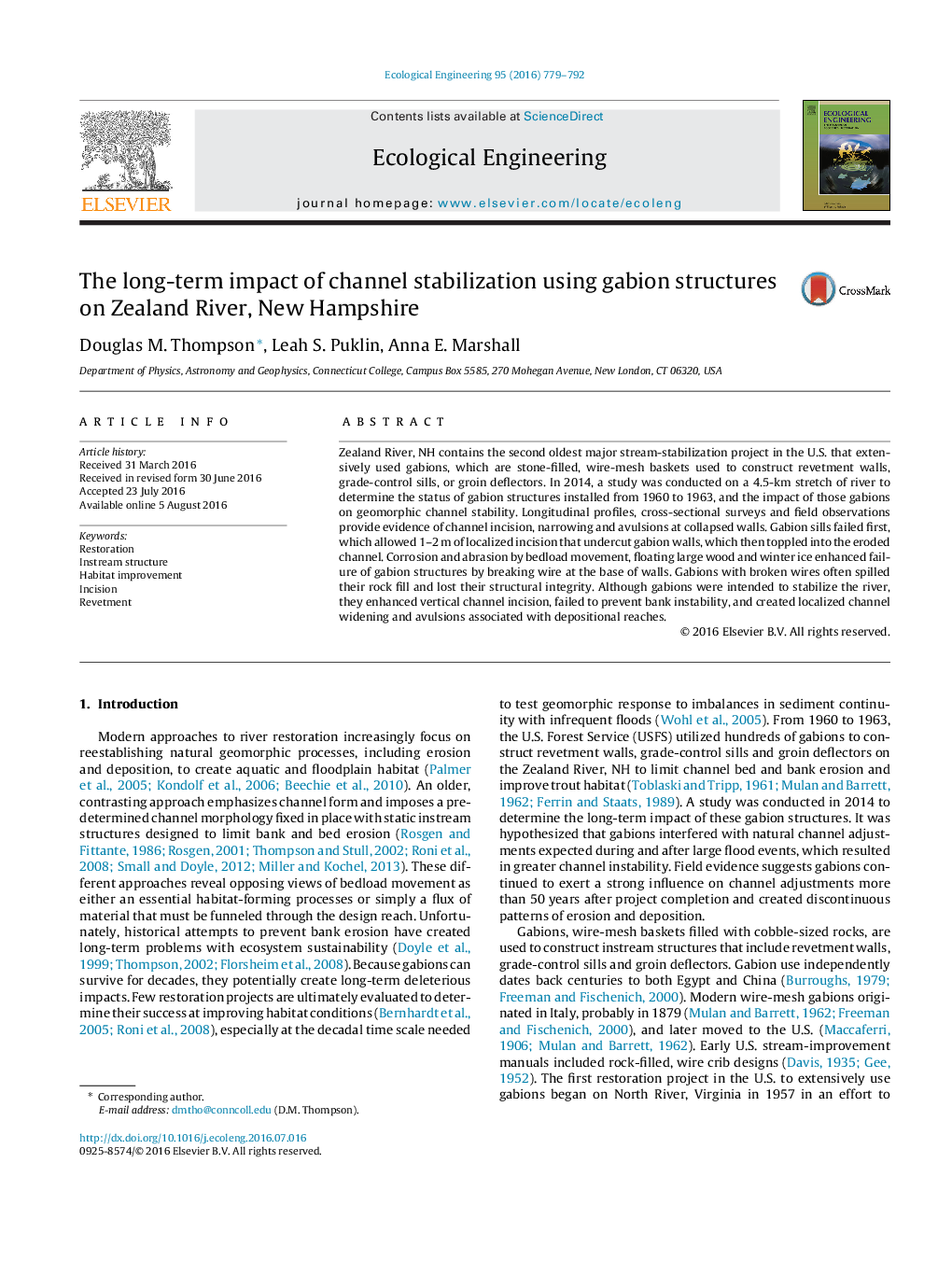| Article ID | Journal | Published Year | Pages | File Type |
|---|---|---|---|---|
| 4388509 | Ecological Engineering | 2016 | 14 Pages |
•Gabion sills provided no grade control 50 years after installation.•Gabion walls narrowed flow, increased incision and were often undermined.•Gabions prevented natural channel adjustments and limited floodplain connectivity.•Gabion interactions with vegetation increased failure rate and complicate removal.
Zealand River, NH contains the second oldest major stream-stabilization project in the U.S. that extensively used gabions, which are stone-filled, wire-mesh baskets used to construct revetment walls, grade-control sills, or groin deflectors. In 2014, a study was conducted on a 4.5-km stretch of river to determine the status of gabion structures installed from 1960 to 1963, and the impact of those gabions on geomorphic channel stability. Longitudinal profiles, cross-sectional surveys and field observations provide evidence of channel incision, narrowing and avulsions at collapsed walls. Gabion sills failed first, which allowed 1–2 m of localized incision that undercut gabion walls, which then toppled into the eroded channel. Corrosion and abrasion by bedload movement, floating large wood and winter ice enhanced failure of gabion structures by breaking wire at the base of walls. Gabions with broken wires often spilled their rock fill and lost their structural integrity. Although gabions were intended to stabilize the river, they enhanced vertical channel incision, failed to prevent bank instability, and created localized channel widening and avulsions associated with depositional reaches.
